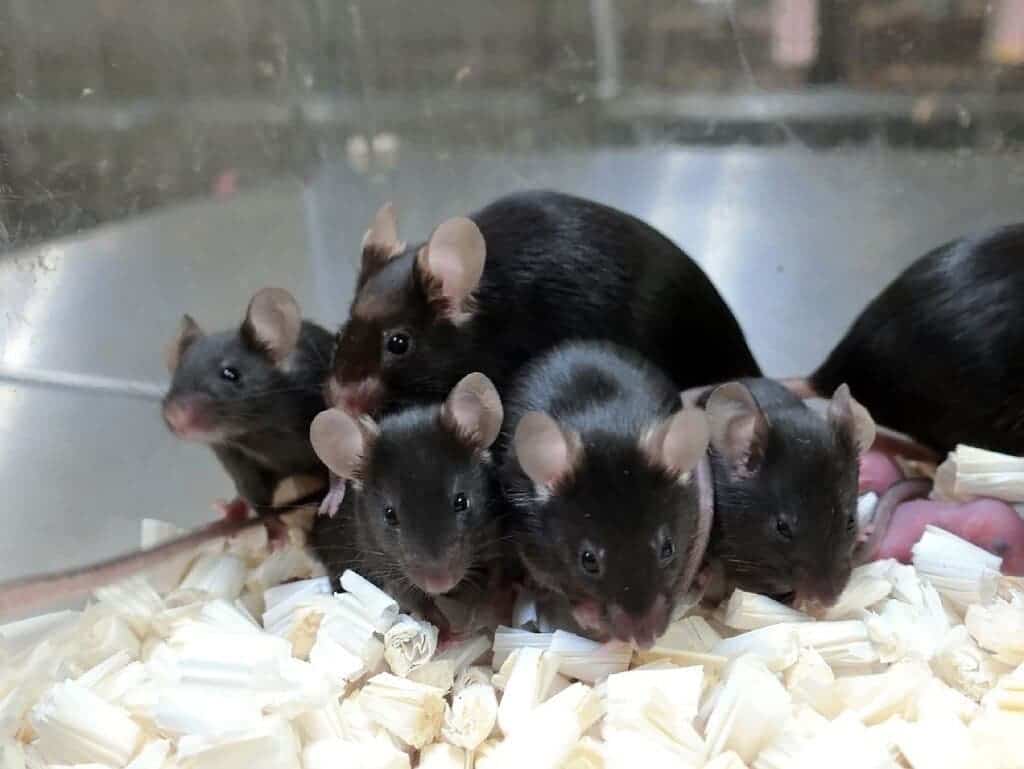Mouse sperm was frozen and stored on the International Space Station for six years — exposed to high levels of cosmic radiation. The sperm was stored in freeze-dried form, and then rehydrated after it was brought back to Earth. Now, Japanese researchers have found that the sperm produced a brood of healthy pups that don’t seem at all different from their earthbound brethren.

Remarkably unremarkable
The experiment started in 2013, when developmental biologist Teruhiko Wakayama and colleagues launched three boxes to the International Space Station (ISS) for a study. The boxes contained samples of freeze-dried mouse sperm, and the goal of the study was to see whether exposure to cosmic radiation would have any effects on offspring produced with the sperm. In particular, the researchers were looking to see if any genetic mutations would be passed on.
Freeze-dried sperm was used because it can be preserved at room temperature (rather than requiring a freezer), and it only requires a small amount of space, thus reducing the costs of flying to and storing aboard the ISS. The entire setup was about the size of a pencil.
Radiation can damage DNA within cells, and space radiation has been a concern for astronomers for a while now, with astronauts from countries like the US and Japan being engaged in lengthy missions in low orbit — and even longer missions on the horizon. Space agencies are looking at developing systems that could protect astronauts from the long-term effects of radiation, which can damage the DNA within cells and cause mutations.
This is where the space pups come in. After the sperm was returned to Earth, it was rehydrated and used for fertilization. There appeared to be no difference between the offspring obtained thusly, and the control group. When the space mice reached adulthood, they were randomly mated and the next generation appeared normal as well.
“All pups had normal appearance,” Wakayama told AFP, and when researchers examined their genes “no abnormalities were found.”
From SciFi to reality
Wakayama was inspired by the science fiction of Heinlein and Asimov and once wanted to be an astronaut. He shifted paths somewhat and opted for a science career, working to turn the concepts described in fiction works into reality.
If humanity wants to carry on exploring the solar system and eventually even move beyond that, we’ll need to have a safe way of ensuring long-term space flight. If this happens, we’ll need ways to ensure the genetic diversity of space colonizers — as well as their pets and animals. According to the team’s calculations, freeze-dried sperm can be safely stored for up to 200 years on board an orbital ship as the process of freeze drying increases its tolerance.
“In the future, when the time comes to migrate to other planets, we will need to mantain the diversity of genetic resources, not only for humans but also for pets and domestic animals,” Wakayama and colleagues wrote in their paper.
“For cost and safety reasons, it is likely that stored germ cells will be transported by spaceships rather than by living animals.”
While the results are encouraging though, they don’t guarantee that humans can freely travel to the stars now. The same findings would need to be replicated on humans, and in addition, the effects of space radiation on frozen female eggs and fertilized embryos would also have to be investigated. The human space age isn’t here quite yet. But it may not be long now.
Journal References: Sayaka Wakayama et al, Evaluating the long-term effect of space radiation on the reproductive normality of mammalian sperm preserved on the International Space Station, Science Advances (2021). DOI: 10.1126/sciadv.abg5554









